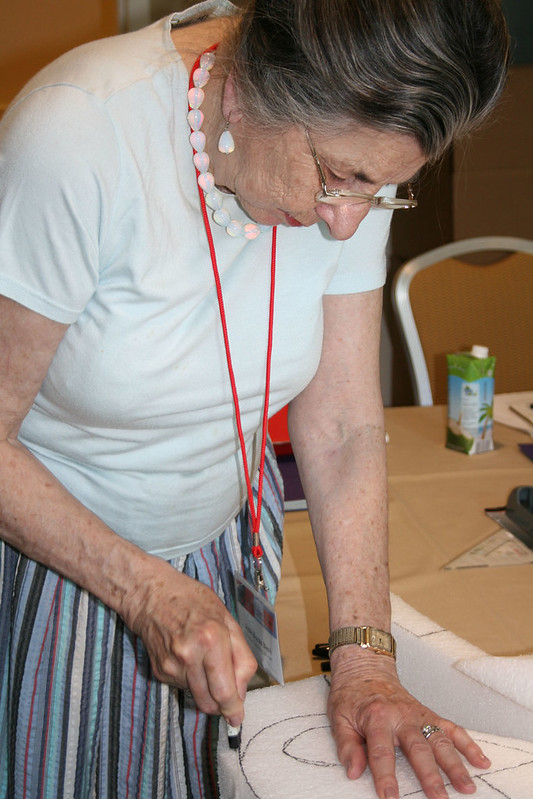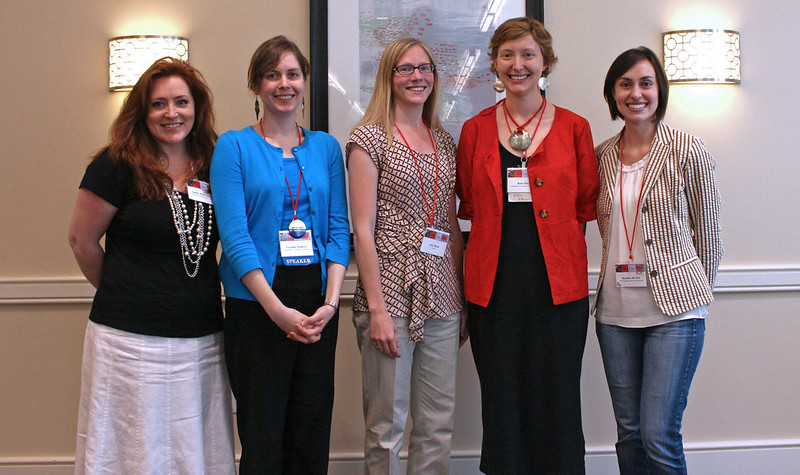p.MsoNormal, li.MsoNormal, div.MsoNormal { margin: 0in 0in 0.0001pt; font-size: 12pt; font-family: “Times New Roman”; }div.Section1 { page: Section1; }ol { margin-bottom: 0in; }ul { margin-bottom: 0in; } p.MsoNormal, li.MsoNormal, div.MsoNormal { margin: 0in 0in 0.0001pt; font-size: 12pt; font-family: “Times New Roman”; }div.Section1 { page: Section1; }ol { margin-bottom: 0in; }ul { margin-bottom: 0in; }
ECPN MEETING MINUTES
May 19, 2011
Conference Call Attendees:
Rose Cull
Ryan Winfield
Karen Pavelka
Heather Brown
Carrie Roberts
Amy Brost
Rebecca Rushfield
LeeAnn Barnes Gordon
I. April Minutes
a. ECPN April minutes approved.
II. AIC Meeting 2011
a. Portfolio Session (Carrie) – Amber will send out the final notice on Monday to participants and will include the event location. Ryan will email it to her – it is Room 415, 4th floor. Buffalo will have 2-3 participants, Delaware will have 4, other programs will have at least one. Per Ryan, the 1-1:30 coffee break was canceled, so the committee agreed that the Portfolio Session should run during the 10-10:30 morning break and 3-3:30 afternoon break. Ryan will change the conference program guidelines to reflect this change.
b. Survey (Rose/Ryan) – ECPN members should review the survey (set up in Survey Monkey) that will be given to attendees at ECPN events following the AIC meeting. Rose will send it out to the full committee following the call. Provide comments/feedback to Rose and Ryan. Email addresses of participants will be collected at all ECPN events at AIC.
c. Meeting of the Graduate Programs (Carrie) – Primary discussion topic will be the student research repository. Stephanie Lussier of ETC, Carrie, and Amber will deliver a summary of the proposal, and then open the floor for discussion, which will be moderated by Eryl Wentworth. Will perhaps record it. Discussions will be used to develop the proposal, which is evolving. Topics for discussion: Types of documents (paper or/and posters?) How material will be submitted? What role will programs play in the vetting process? How are we going to sustain the site? Should there be a committee devoted over the long term to overseeing it and maintaining/expanding it? Should the database be part of CoOL or be its own separate entity? If it’s not on CoOL, how can it be funded? Carrie will forward agenda to ECPN members. Rose proposed adding Graduate Student Liaisons to the agenda for the meeting, in terms of a broader goal to connect students to what ECPN is doing. Get them involved in ECPN initiatives, not only the student research repository, but activities across the board.
d. ECPN Informational Meeting – Ryan provided the meeting location: Room 406, 4th floor. Rose asked that each committee member provide agenda items to her for this meeting. Amy, Heather, Carrie, and Amber should provide agenda items by Wednesday of next week.
e. Poster Amber picked it up. She should either download and complete the form for reimbursement from the AIC website, or provide her receipt to Ryan who will complete the form. Amy will connect with Amber and install the poster on Tuesday morning, if possible. Exhibit hall closes at 5 pm. Amy has a tour from 12:30-5:30, so if the poster cannot be installed before 12:30, alternative arrangements will be made. Amy to bring push pins. Ryan provided the space number: #18. Exhibit hall opens officially on Wednesday, 6/1 at 10 am. Anyone interested can join Rose during the poster session. Poster presenters are expected to stand by their posters for an “Author in Attendance” period, during the final coffee break (3:00 to 3:30 PM) on Thursday, June 2.
f. Flier – Ryan is having it printed for the conference bag.
g. Outreach – Heather already created Events in Facebook, and will post the Portfolio Session also. She will update the Wall, and the blog post is completed. Ryan will send out the email reminder.
h. Meeting Attendance – Additional meetings that will be attended by ECPN members are: Publications Committee (Amy), Education and Training (Carrie, Amber, and Karen), ECPN meeting (Rebecca Rushfield from the ETC), RATS meeting (Stephanie Porto). Rose & Amy will attend the Wiki meeting – if others are interested this meeting is 5:30-7 pm on June 2nd after the AIC business meeting. Amy will attend the Heritage Preservation Meeting on Wednesday at 4 pm.
i. Blogging at the AIC Meeting – Rachael needs bloggers. Has BPG and OSG. Looking for more people who are attending other sessions to blog. Karen suggested sending a message to chair of each session to call for volunteers. Rachael has done that, per Rose. Rose to email Rachael and let her know that people could write a summary and she would turn it into a blog post. Not sure why people are hesitant – the note-taking or the posting? For the AIC blog, has some kinks – introduction to Philly blog post going up soon. Heather will follow up with Rachael.
III. Position Vacancies – Chair, Vice Chair, and Outreach positions will be turning over and will transition by September. Heather will write a position description for Outreach and send it to Rose before the informational meeting at AIC.
IV. Mentoring Program – Rose and Ryan are drafting an e-mail to send to PA’s and Fellows to get more mentor applications. Some people applied and never heard back, probably due to legacy issues with the previous system. Rose will follow up with them and ask them to apply again. Karen added that she has heard the same – Karen will send something out to BPG to encourage people to apply again. The AIC Annual Meeting is a good opportunity to ask people in person. Karen would like paper forms to hand out to people. Ryan indicated that the revised forms are up on the website to download and print out. Rose will distribute hard copy forms as well.
V. Updating the AIC Website – Discussed at the Education and Training meeting. Stephanie Lussier indicated that the group is seeking suggestions from ECPN. Areas for updates include documents on the Education & Training page and “How to Become a Conservator.” Rose will set up an area for ECPN feedback on Google Docs.
VI. CAC – Rose will follow up with Stephanie to find out if anyone else from the Canadian group is coming to AIC, and to explore more ways to collaborate.
VII. IAG Meeting 2010 – Rose reminded everyone to take a look at the minutes from the November 2010 meeting of the Internal Advisory Group, to get a sense of the issues of importance for the organization as a whole.
VIII. Discussion – Rebecca made a general comment that she felt ECPN was a valuable resource, one that she would have appreciated when she first started. She hopes that students and recent graduates take full advantage of what the committee has to offer.
a. She asked about member numbers, and ECPN has around 500 people in the AIC mailing list (who checked the box to receive ECPN information), over 300 Facebook friends, and around 30 people attended last year’s informational meeting. The group has many stakeholders and is growing.
b. K-12 initiatives are being discussed by ETC to increase the number of people who appreciate the field and are interested in it. Rose responded that there is a tremendous need for conservation, and a discussion of how ECPN can help meet this need followed: (1) Perhaps a mentor program for small institutions on fundraising; (2) Engage the regional centers to help small institutions; (3) Advocacy that can help increase funding for the field; (4) Explore alternative funding models based on social media (example, Kickstarter.com)
c. See the poster at AIC about the value of conservators which has statistics about the profession and its past, and future
d. Brainstorming can be part of the ECPN meeting at AIC
IX. Early Career Support – Point was raised that there is a need for funding in the intermediate phase between student and Professional Associate (PA). Per Karen, the PA requirement was added to some funding to encourage PA status, but it does create a gap in funding eligibility. ECPN can help support emerging conservators seeking PA status. Also, in the ECPN statement about “what we do” it says we facilitate people’s transition to PA. Helping with the application? Maybe develop a “How to become a PA” FAQ sheet? Some people don’t know the steps or the benefits. Rose could call someone in membership to talk about this. Rose will speak with Tom Edmondson and Martin Burke. Ryan indicated that the PA evaluation committee has a different structure – the members process/approve applications. Function-oriented, and not interested in growth, per se. They try to remain impartial. Rose will develop talking points for ECPN informational meeting. Karen mentioned that acquiring PA status could be the point at which members move out of ECPN.
Note on accommodations at AIC: Rebecca Rushfield can share her room on Tuesday and Wednesday night for $10 per night. Email Rebecca if you or anyone you know is looking for a room to share. For the 2012 AIC Meeting, consider reaching out to more established conservators in advance to see if they would be willing to share their rooms.
Next call will be June 16 at 1 PM EST.
Respectfully submitted,
Amy Brost










